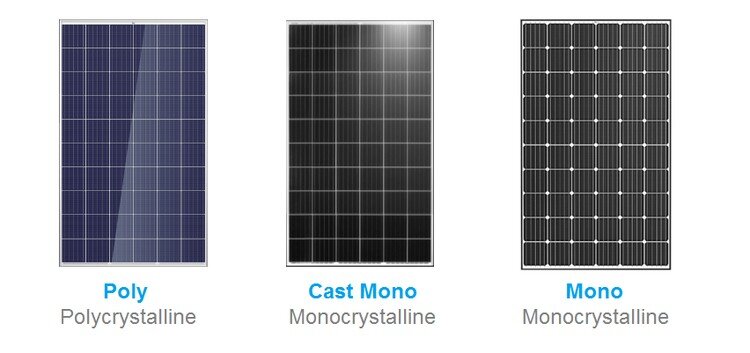Fascination About Solar Systems
Wiki Article
The Best Strategy To Use For Solar Systems
Table of ContentsThe Only Guide to Solar SystemsRumored Buzz on Solar SystemsThe 5-Second Trick For Solar SystemsNot known Details About Solar Systems
There are three various sorts of photovoltaic panels: monocrystalline, polycrystalline, and also slim movie. Monocrystalline solar panels are extremely reliable and have a sleek layout, yet come with a higher price factor than other solar panels. Polycrystalline photovoltaic panels are cheaper than monocrystalline panels, nonetheless, they are much less efficient and also aren't as aesthetically pleasing.Nowadays, there are numerous selections of monocrystalline photovoltaic panels on the market to select from. Passivated Emitter and also Rear Get in touch with cells, more typically referred to as PERC cells, are becoming a progressively popular monocrystalline alternative. PERC cells go with a various manufacturing as well as setting up process that enhances the quantity of electrical power the cells can create.
Since monocrystalline solar cells are constructed from a single crystal of silicon, electrons are able to easily stream throughout the cell, raising general efficiency. Not only do monocrystalline panels have the greatest performance rankings, they typically additionally have the highest possible power ability scores, also. Most monocrystalline panels on the marketplace today will have a power result rating of at the very least 320 watts, yet can go up to around 375 watts or higher!.
Since polycrystalline cells have numerous silicon cells, the electrons can stagnate as quickly and consequently, reduce the effectiveness of the panel. The reduced performance of polycrystalline panels additionally indicates they often tend to have a lower power result than monocrystalline panels, normally ranging in between 240 watts and 300 watts.
Solar Systems for Beginners
In order to meet your energy requires, you would certainly require to mount even more slim film panels over a big area to produce the exact same amount of electrical power as crystalline silicon solar panels. This is why thin film solar panels do not truly make sense for residential setups where room is restricted.The temperature level coefficient tells you just how much the power result will certainly lower by for every 1 * C over 25 * C the panel obtains. The basic temperature level coefficient for mono as well as polycrystalline panels commonly falls someplace between -0. 3% and -0. 5% per * C. Thin movie panels on the other hand, are around -0.
With some slim film panels, it's difficult to even see the individual cells within the panel. They likewise have a tendency to have less wiring and also busbars, implying there's less white space. Due to the fact that they are so inefficient, you would certainly require to cover your whole roof covering in thin movie panels - which may or might not be your style.

Some makers have functioned around this with black packing or forming the cells differently, however these visual changes can impact both the rate and also efficiency of the panels. original site Generally, monocrystalline panels still look sleek, yet they're a bit extra noticable than thin movie panels. solar systems. The process in which polycrystalline solar batteries are manufactured causes the cells to have a blue, marbled look.
The Best Guide To Solar Systems
If you're on a tight spending plan, polycrystalline panels could make more sense for you. We do not recommend slim movie solar panels for property installations - their efficiency as well as toughness don't make the inexpensive worth it, and also it's unlikely you'll have almost sufficient space to mount the number of slim film panels you would require to cover your household electricity usage.Because they are made look at these guys from pure silicon, they can be conveniently determined by their dark black shade. Using pure silicon also makes monocrystalline panels the most space-efficient and also longest-lasting amongst all 3 solar panel types. Nevertheless, this comes at a price a great deal of silicon is thrown away to generate one monocrystalline cell, sometimes reaching over 50%.

Amorphous silicon panels (A-Si) acquire their name from their unformed nature. Unlike mono-and polycrystalline solar cells, the silicon is not structured on the molecular degree.
Solar Systems Fundamentals Explained
$0. 32-$0. 65 $1 $1. 50 $0. 70 $1 $0. 60 $0. 70 $0. 50 $0. 60 $0. 43 $0. 50 Note that these figures do not consist of the price of installation as well as labor. With labor as well as other overhead factors, the overall can increase to $2. 50 to $3. 50 per watt.
This means that thin-film panels can be an excellent alternative for hotter settings or locations that experience more sunlight throughout the year. The updated International Building regulations of 2012 calls for photovoltaic panels to match the fire rating of the roofing system where they are mounted. This is to make sure that the modules do not accelerate the spread of flames in the event of a fire.
Report this wiki page